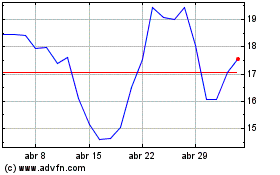Bitcoin faces selling pressure with resistance at $63,000
Bitcoin (COIN:BTCUSD), after reaching $64,448 on October 7,
briefly dipped below $62,000, currently trading at $62,200, nearly
unchanged over the last 24 hours. Selling pressure observed on
Coinbase, along with China’s underwhelming economic stimulus,
suggested a bearish outlook. The National Development and Reform
Commission (NDRC) briefing lacked clear details, frustrating
investors, impacting the digital asset market. Despite significant
inflows into ETFs on Monday, Bitcoin struggles to stay above its
50- and 100-day moving averages, facing resistance around
$63,000.
Bitcoin ETFs attract new investments, while Ethereum ETFs remain
neutral
On October 7, 2024, Bitcoin ETFs began the week with strong
optimism, receiving $235.19 million in new investments. Fidelity’s
Wise Origin Bitcoin Fund (AMEX:FBTC) led with $103.68 million,
followed by BlackRock’s iShares Bitcoin Trust (NASDAQ:IBIT) with
$97.88 million. Other funds, like Bitwise’s (AMEX:BITB) and ARK
21Shares (AMEX:ARKB), also recorded inflows, strengthening
confidence in the market. Meanwhile, Ethereum ETFs remained
completely neutral, with all nine ether ETFs registering zero
flows. The last occurrence was on August 30.
Bitcoin miners face revenue decline despite rising hash rate
In September, publicly traded Bitcoin miners experienced their
third consecutive month of daily revenue decline, impacted by
increasing network difficulty. The network’s hash rate grew by 2%
compared to August, but earnings per EH/s dropped 6%, averaging
$42,100. Despite Bitcoin gaining 7% in value, miners like Marathon
Digital (NASDAQ:MARA) and Riot Platforms (NASDAQ:RIOT) excelled in
production, while companies like Cipher Mining (NASDAQ:CIFRW) sold
much of their BTC.
BitcoinOS and B² Network collaborate to integrate ZK-based
trustless bridge
BitcoinOS (COIN:BOSUSD) is partnering with B² Network to launch
the Grail bridge by the end of 2024. This integration will enable
secure BTC asset movement between networks using zero-knowledge
(ZK) proofs. It will also strengthen Bitcoin’s Layer 2
infrastructure, allowing faster and more secure transactions, while
supporting applications like DeFi and NFTs. The partnership
enhances DeFi security and scalability on Bitcoin, with B² Network
benefiting from EVM compatibility and high speed.
Scroll to launch SCR token for decentralization and governance
Scroll, a Layer 2 scalability solution for Ethereum’s blockchain
ecosystem, announced the launch of its SCR token. The token will be
used for governance and decentralization of its Layer 2 network.
The launch is set for October 22, with 7% of the tokens distributed
via airdrop. SCR will also support the decentralization of prover
and sequencer components. The team plans to distribute 15% of
tokens via airdrops, while 5.5% will be allocated to Binance
Launchpool.
Vulnerability in NEAR protocol could have frozen the entire network
The NEAR Protocol (COIN:NEARUSD) had a severe vulnerability that
allowed an attacker to freeze all network nodes, potentially
shutting it down. Discovered by Zellic and fixed in January, the
flaw involved SECP256K1 signature verification, causing node
crashes. While no attack occurred, the issue was described as a
“Web3 Ping of Death.” The NEAR team rewarded Zellic with $150,000
for the discovery and quietly applied the patch.
Crypto.com sues SEC to defend cryptocurrency industry in the US
Crypto.com filed a lawsuit against the US Securities and
Exchange Commission (SEC) on October 8. CEO Kris Marszalek stated
the lawsuit aims to combat the SEC’s “regulation by enforcement,”
which he argues harms millions of crypto holders. The exchange also
requested the SEC and CFTC to categorize crypto derivative
products. The lawsuit follows Crypto.com receiving a Wells notice
from the SEC.
Reconciliation failure exposes inadequate control at FalconX and
Binance
Crypto brokerage FalconX held 1.35 million Solana tokens (COIN),
valued at $190 million, without control for years. Binance, a
liquidity partner, recently claimed ownership of the tokens.
According to CoinDesk, both companies confirmed a “reconciliation
anomaly” and returned the assets to Binance. The incident
highlights fragile controls in the crypto sector, where major audit
firms like PwC point to an immature control environment in digital
finance.
Alchemy Pay integrates cryptocurrency payments into Samsung Pay
Alchemy Pay, a leading crypto payments provider, integrated its
virtual cards into Samsung Pay, allowing 500,000 users to make
crypto payments. This feature follows Alchemy Pay’s recent
integration with Google Pay and extends its services to retailers
like Amazon, Netflix, and Apple Store. The company anticipates
significant demand from this partnership, enhancing its presence in
digital payments and expanding support for Visa, Mastercard, and
other networks.
HBO documentary fuels speculation about Nick Szabo being Satoshi
Nakamoto
HBO’s documentary The Bitcoin Mystery has reignited
theories about the true identity of Satoshi Nakamoto, pointing to
cryptographer Nick Szabo as a possible candidate. Szabo, known for
creating the Bit Gold concept, a precursor to Bitcoin, and for his
contributions to blockchain technology, has often been linked to
Nakamoto due to similarities in their work. Szabo denies being
Satoshi, while his expertise continues to fuel speculation in the
crypto market. Although Satoshi’s identity remains unknown, their
anonymity is seen as essential to Bitcoin’s decentralized ethos.
With a fortune estimated at 1 million bitcoins, revealing Satoshi’s
identity could impact the market, but many believe preserving their
anonymity is crucial for Bitcoin’s integrity.
MARA (NASDAQ:MARA)
Gráfico Histórico do Ativo
De Nov 2024 até Dez 2024

MARA (NASDAQ:MARA)
Gráfico Histórico do Ativo
De Dez 2023 até Dez 2024
